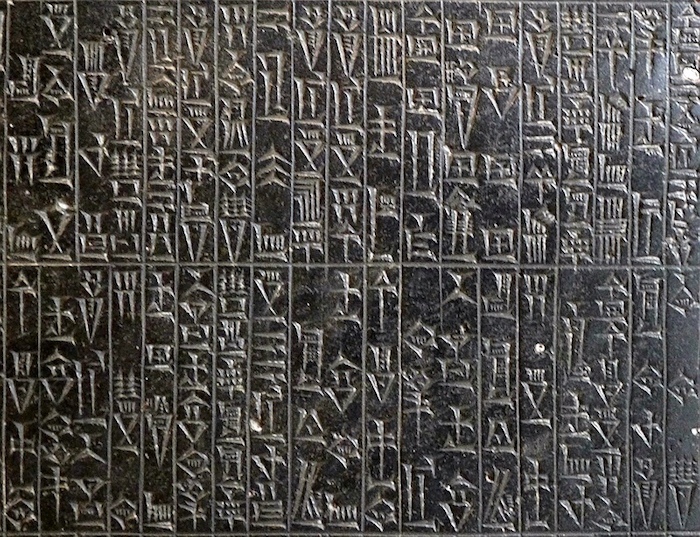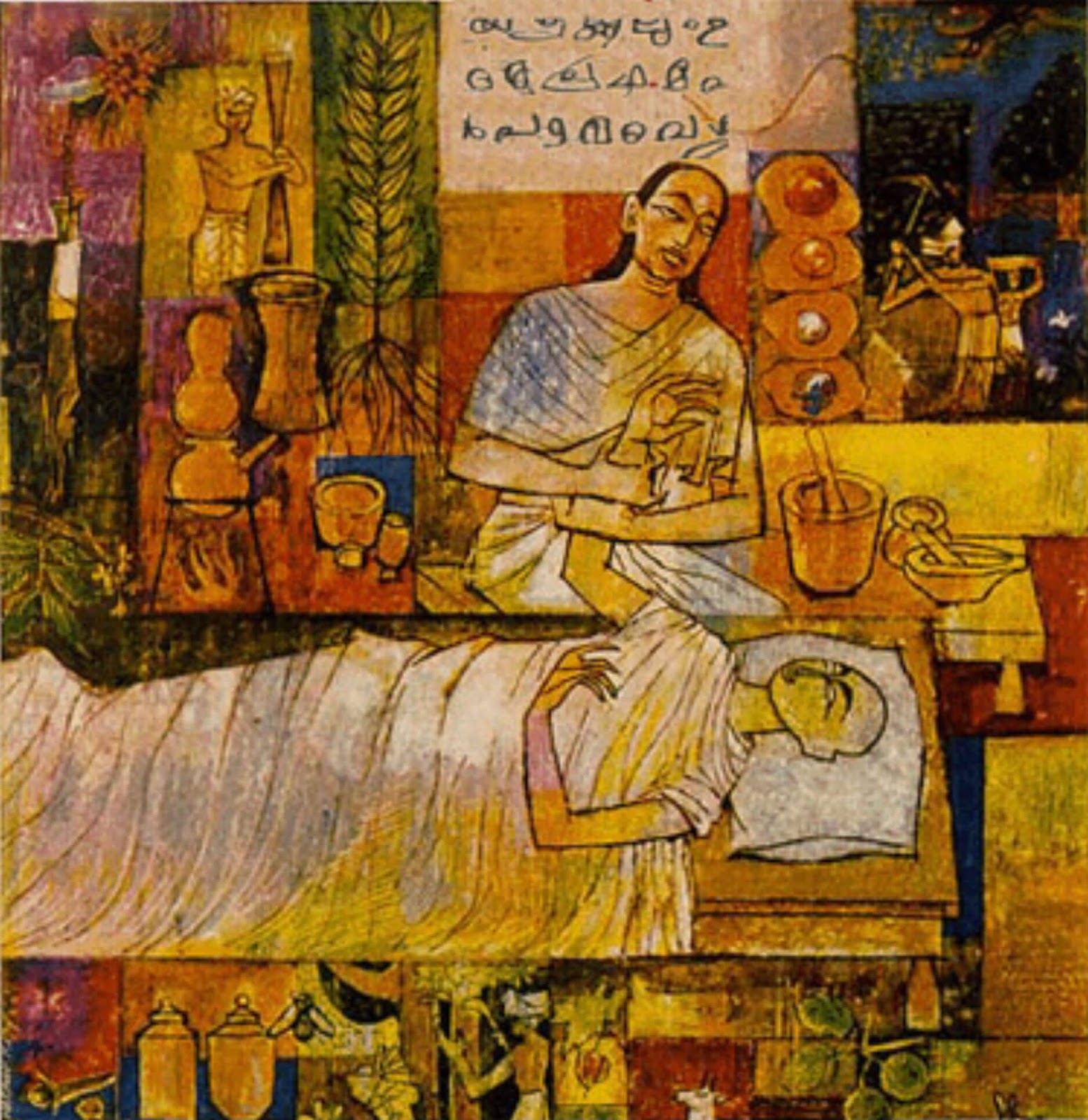History of Medicine. Babylon and Ancient India

The school course of ancient history says fluently that Babylon is a kind of the world's first metropolis, located on the territory of Ancient Mesopotamia. This city has firmly taken its place in world culture and religion, and is famous primarily for its Etemenanki ziggurat (Tower of Babel) and one of the wonders of the world - the Hanging Gardens of Semiramis (whose existence, however, has not been proven by modern science). The period of the rule of King Hammurabi in 1793-1750 BC is considered to be momentous in the history of Babylon. e.
The famous Hammurabi Code, one of the oldest legal monuments in the world, regulated not only the issues of private and criminal law, but also the provision of medical services. The law also established a tariff for the services of doctors and surgeons and severely punished them for unprofessional work.
The basis of medicine in ancient Babylon, as in Egypt, lay magical rituals. And even those few procedures based on scientific knowledge, such as making diagnoses and further predictions of the patient's state of health, were thoroughly penetrated by the supernatural. Historians learned about this from the Assyrian copies of the Babylonian texts, which are believed to have arisen in the first half of the second millennium BC.

Hammurabi Code of Law
The diagnostic manual was based on a set of axioms and assumptions, including the notion that when examining a patient, it is possible to determine the disease, its cause and future development, as well as the chances of recovery. The symptoms of the disease were treated with the help of herbs and creams.
Babylonian doctors describe mental disorders, infections, alopecia, diseases of the respiratory and digestive organs, muscles and ligaments in leading medical treatises. In addition, there were separate specialized work on pregnancy, childbirth, obstetrics and diseases of the genital organs.
Although Babylonian doctors have made quite a few recipes in their entire history, most of them today are considered ineffective for the conditions in question. Most of the ingredients used were probably chosen based on a combination of trial, error, and guesswork. And Babylonian doctors knew practically nothing about the functions of most organs of the human body.
Despite the fact that the autopsies helped the doctors to learn about the location and appearance of the organs, the understanding of their work was limited to this. For example, the Babylonians thought that the liver is the source of body life, both physical and spiritual.
Archaeologists have found that practitioners in ancient Babylon tried to diagnose and treat a variety of diseases: intestinal disorders, problems with breathing and urination, epilepsy, and even mental disorders. However, their diagnosis did not always suggest the natural cause of these diseases. Often they attributed suffering to gods or spirits, and turned to astrology and other superstitious methods for seeking further treatment.
For example, the author of the diagnostic reference book Sakikku in the 11th century BC. e. He wrote that if the doctor, going to the patient, saw a pig on his way, then this is a sign of the patient’s imminent death. He even gives a special classification: if the pig is black, the patient will be in a critical condition or will soon die, the white pig is a sign of probable recovery.
Babylonian health care rested on two types of practitioners: doctors and exorcists (or priests). Often they worked together: one provided treatment, and the other protected from evil spirits, who were thought to have a negative effect on health.
The doctor was primarily engaged in diagnosis, further prognosis and physical treatment: he wrote prescriptions, looked after wounds, performed operations and performed other medical procedures. But in order to become a doctor, there was no need for any evidence or proof of knowledge, so any Babylonian could claim this role and practice medicine.
Initially, the role of the exorcist in ancient Babylonian medicine and public health was to expel evil spirits that could harm the health of patients. Exorcists were well versed in spells that were used both separately and with medical treatment. It was believed that the culprits of psychological and mental disorders were demons, so the role of the exorcist in the treatment of these diseases was more important than the practitioner. Sometimes the exorcist even took on double responsibilities and worked as a doctor, making diagnoses and combining the treatment of the disease with magical rituals.
Exorcists enjoyed great respect among the Babylonians and had a higher social position and recognition because of their religious importance. Not everyone could become an exorcist, which distinguished him from a medical practitioner.
In ancient Babylonian medicine used a large number of different materials. First of all, vegetation and animal products (sometimes - feces), minerals were used. Many of the materials prescribed in the recipes, the researchers could not recognize. Doctors made ointments, vegetable oils, drinks, pills, wraps and enemas from these ingredients. However, no data on the use of any of these materials in the anesthetic was found. This indicates that any patient who decided to undergo an operation had to withstand very severe pain. For the treatment of mental disorders, in addition to magic, herbal remedies were often used.
Some texts describe in detail the recipes of the ointment, which help to fight against "solar diseases", by which modern scientists understand sunburn. In one document, a solution to the kidney problem is described in detail by inserting a bronze tube into the urethra and injecting drugs. In addition to this not very pleasant procedure for solving kidney problems, there was a more humane recipe: “Crush and mix together imim (imhur-lim), myrrh, ostrich egg shells and black frit, soak for three days with fish brine, then for three days in wine and for three days in pomegranate juice. If he [the patient] continues to drink this, he will soon recover. ”
There is practically no evidence of cultural intersections of the Babylonians with other civilizations, therefore we can say that medicine and other spheres of social life developed autonomously. The only exceptions are contacts with the inhabitants of ancient India, about the course of development of medicine which we will discuss further.
Medicine in ancient India
Medicine in ancient India began to develop around 5000 BC. e. Even then, dentists in the Indus Valley, where Pakistan is now, drilled people's teeth, trying to cure them. Four thousand years later, the doctors of northern India wrote the medical textbook Atharvaveda . It explained that any disease is caused by evil spirits, and it can be cured by killing the spirit with poisons or spells.

In general, their medicine was not much different from the Babylonian or Egyptian: Indians fought snakes with snake bites, and leprosy with a lichen, which apparently worked as an antibiotic, struggled with snakes. Some historians suggest that the ancient people of Yamnaya brought marijuana to the Indians when they arrived on the Indian subcontinent around 1000 BC. e.
In contrast to the meager information about the medicine of Babylon, which survived only thanks to the Assyrians, the works on Indian physicians have been preserved quite well. The founding father of Indian medicine is considered to be a surgeon named Sushruta, who lived around 500 BC. e. Sushruta described how to pull out teeth, fix broken bones and overcome intestinal diseases - a total of about 1,200 diseases. He also listed 760 medications and compiled a list of 20 sharp instruments needed by the surgeon, including knives, scissors, saws and needles, and 101 blunt instruments (tongs, tubes, levers, hooks and probes). He is also known for his cataract removal operations. Their effectiveness was negligible, and most often the operation left the patient completely blind.
Surgery to restore the patient's nose was more successful, and Sursuta rightfully received the status of the first plastic surgeon. In ancient India, this operation was considered important because at that time the practice of punishment for adultery through amputation of the nose was widespread.
Sushruta did not use any anesthetics other than wine, although he recommended his patients to use the substance Bhang (edible marijuana preparation) for the treatment of cough and dysentery. Around the same time that Sushruta lived, the Indians began using sand and coal filters to get clean water. This invention, most likely, saved a lot of lives.
About 200 AD e. Greek, Chinese, and with them the Indian doctors stopped blaming the evil spirits for all the troubles. Body fluids took their place, as the Indian physician Charaka wrote about. He recognized that the best remedy for the treatment of many diseases is their prevention. Charaka recommended maintaining a balance of fluids to stay healthy. In total, he recognized three types of liquids: bile, phlegm and air. If one of these fluids went out of balance, the ancient physician recommended taking medicine to bring everything back into a state of harmony.
In addition to rebalancing fluids in the body, Indians worked with effective medicines: scurvy — vitamin C deficiency — was treated with citrons. Indian doctors were so respected that local traders literally made a fortune by selling drugs to the Roman Empire, Iran, East Africa and China.
Charaka, from the work of earlier Egyptian doctors, knew that nutrients enter various organs through blood vessels, that the body as a whole produces waste, and the brain serves for thinking. He first described smallpox, which at about the same time, for the first time, devastated the Roman Empire.
A few hundred years later, Indian physicians were the first to invent vaccination against smallpox. In the 700s n. e. Dr. Madhav first mentions this way of dealing with smallpox. He knew that it was possible to cure people, scraping scabs from the skin of those who were already sick, and then inject them into the body with a needle or blow the mashed powder through the nose.
When northern India was conquered by the Muslims around 1000 AD e. Many Iranian doctors arrived there from Western Asia to work there for Muslim rulers. At the same time, they were faced with the fact that the Iranians and Indians differently determine the list of fluids of the human body, and tried to find out on which side the truth. For example, some Muslim doctors began to consider the air as one of the fluids, and black bile and yellow bile were defined as one single substance.
Together with doctors from Iran, opium and black henbane, which were considered anesthetics, got to India, and by 1200 AD Indian doctors from the south have learned to use opium as a means of fighting diarrhea. Dr. Lakshmana Pandita wrote in the early 1400s AD. about the different types of fever, dysentery, miscarriages, cancer, epilepsy, and even kidney stones. Like doctors of that period from other regions, he believed that the patient’s health problems could be determined by counting the pulse.
The medicine of Babylon and ancient India has gone a long, but most importantly, productive path of development from the treatment of diseases with spells and the search for truly effective drugs to successful surgical operations and the treatment of epidemics. The Babylonian doctors, being isolated in their practices from the rest of the world, made persistent attempts to understand the nature of ailments and how to treat them. They did not always succeed, but thanks to their work, we can trace the path of medical thought of that time. The Indians managed to systematize the best and effective practices, to develop several medical schools at once and to bring the idea of treating serious epidemics to a new level.
All Articles